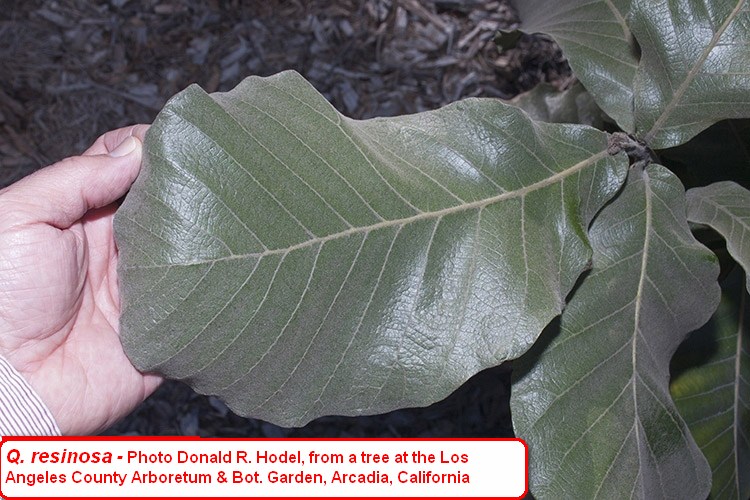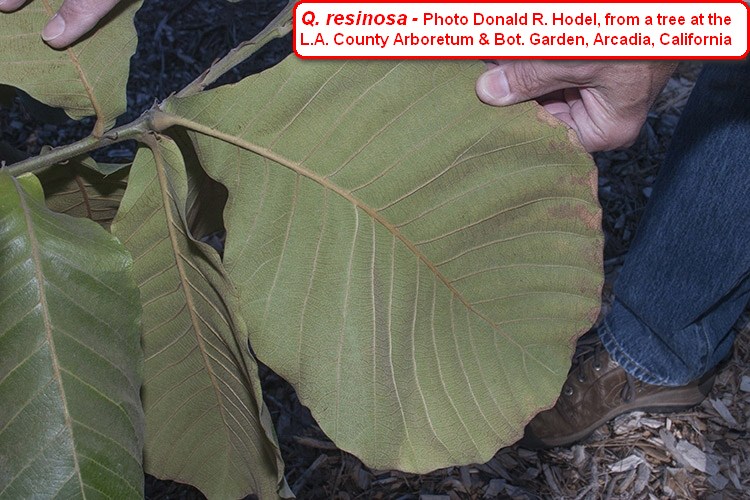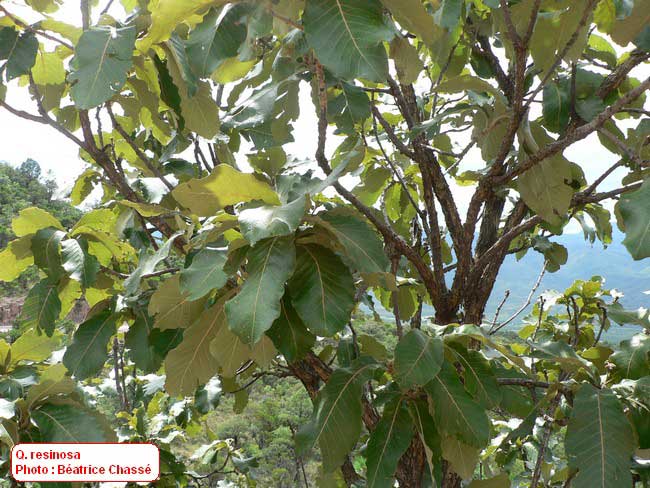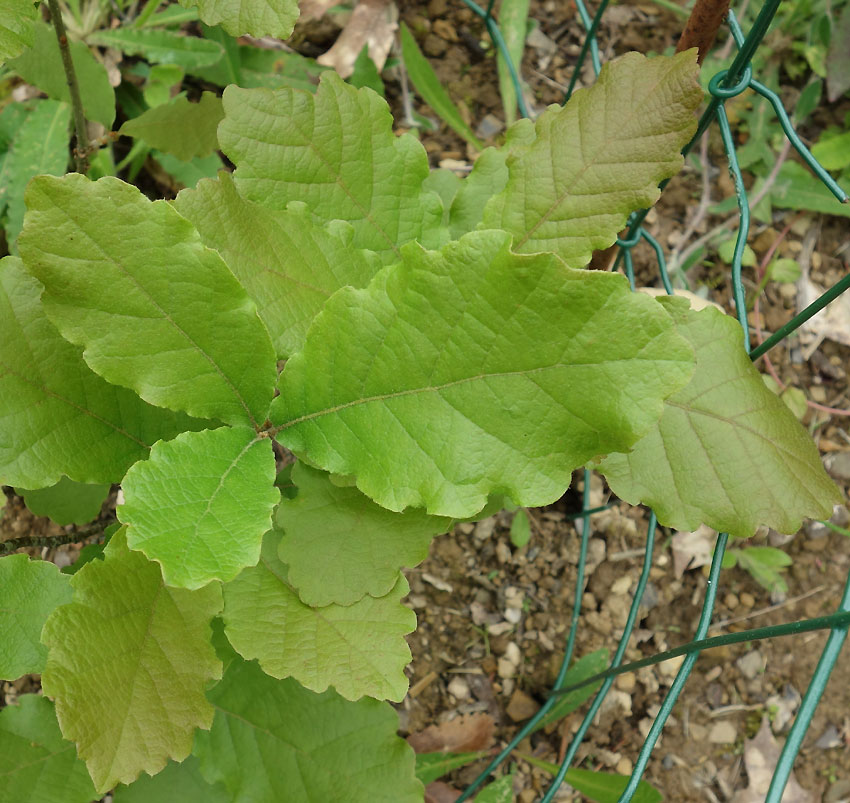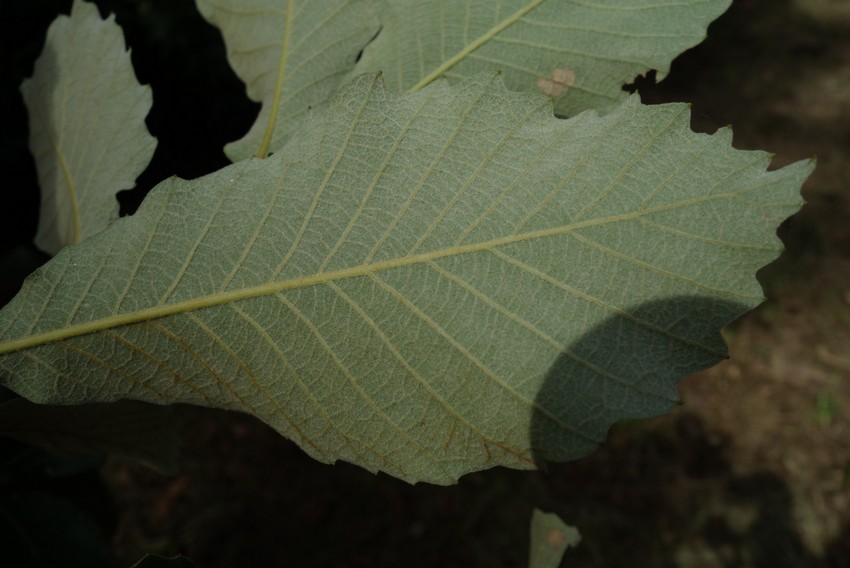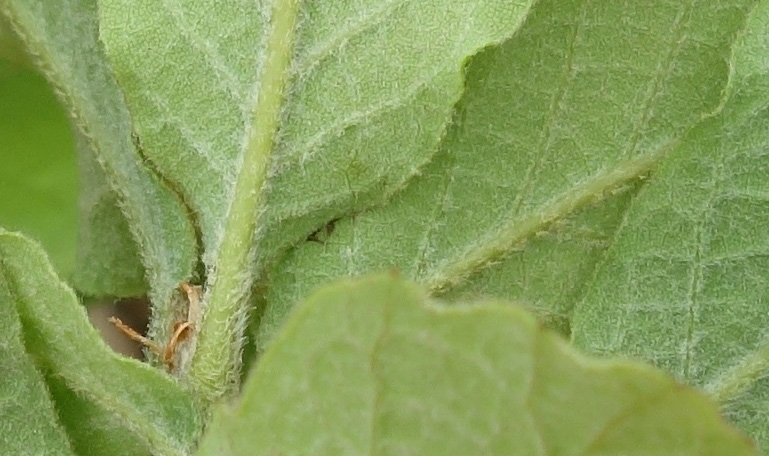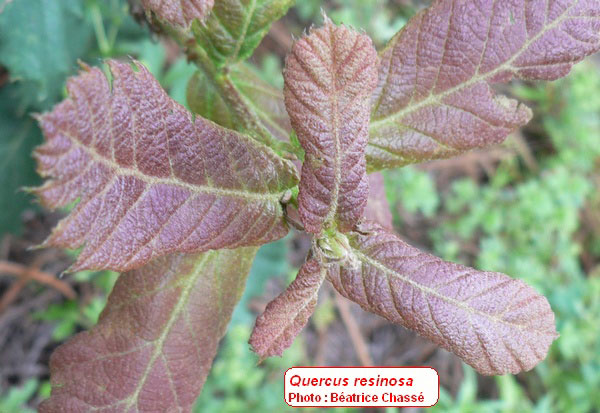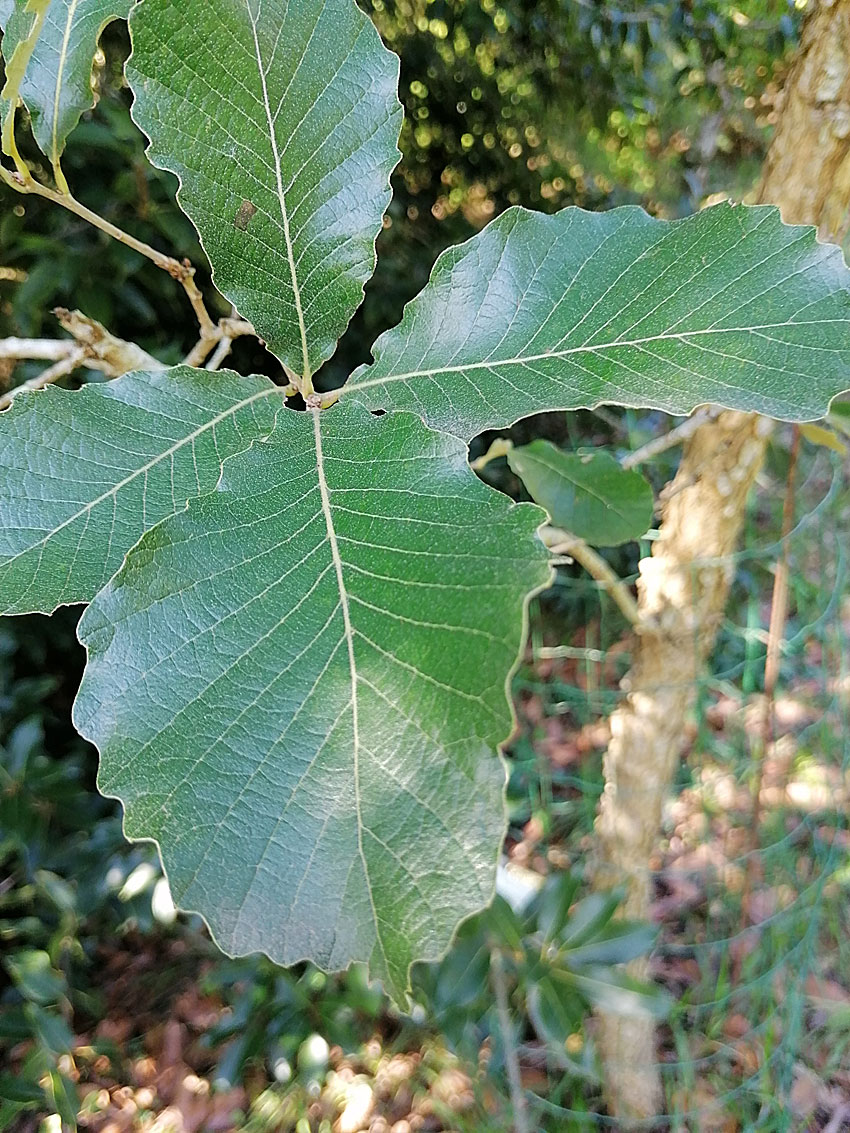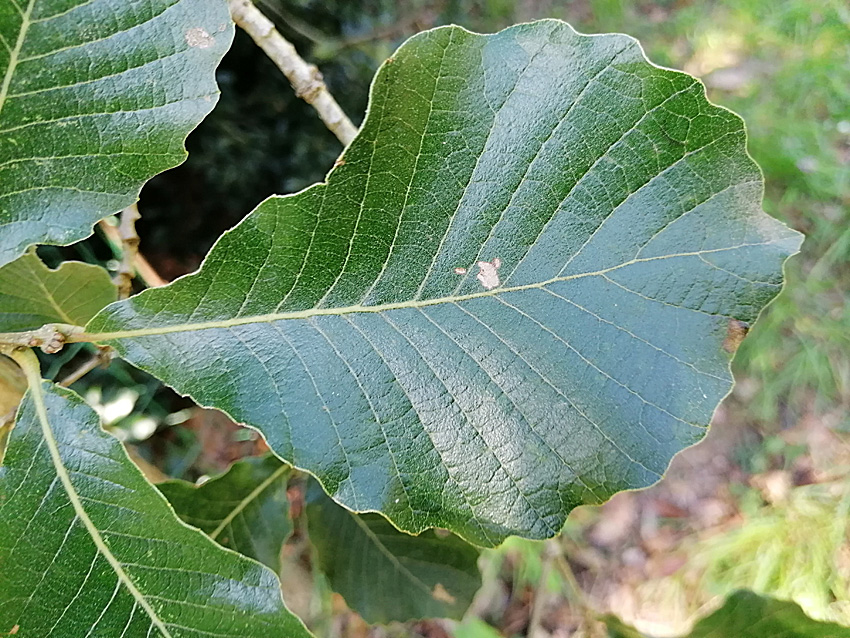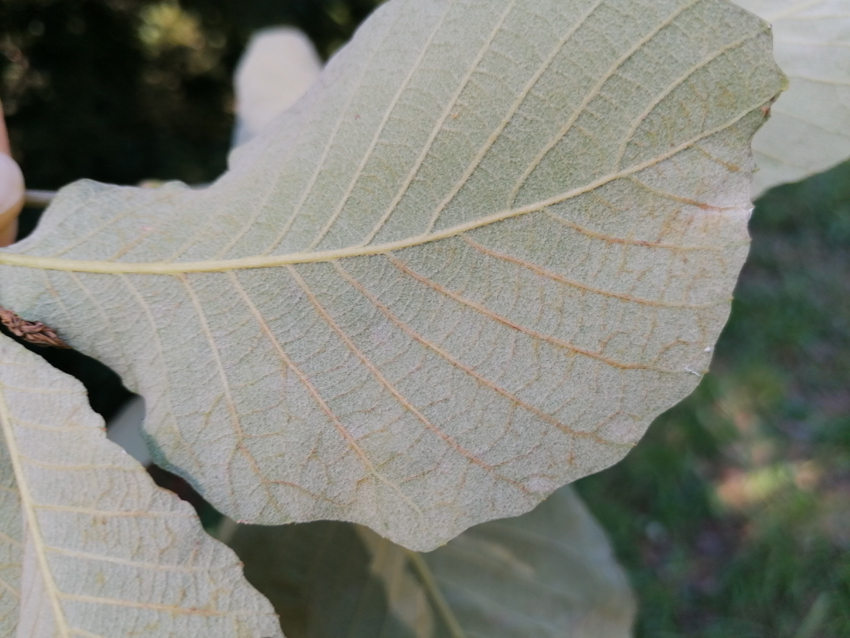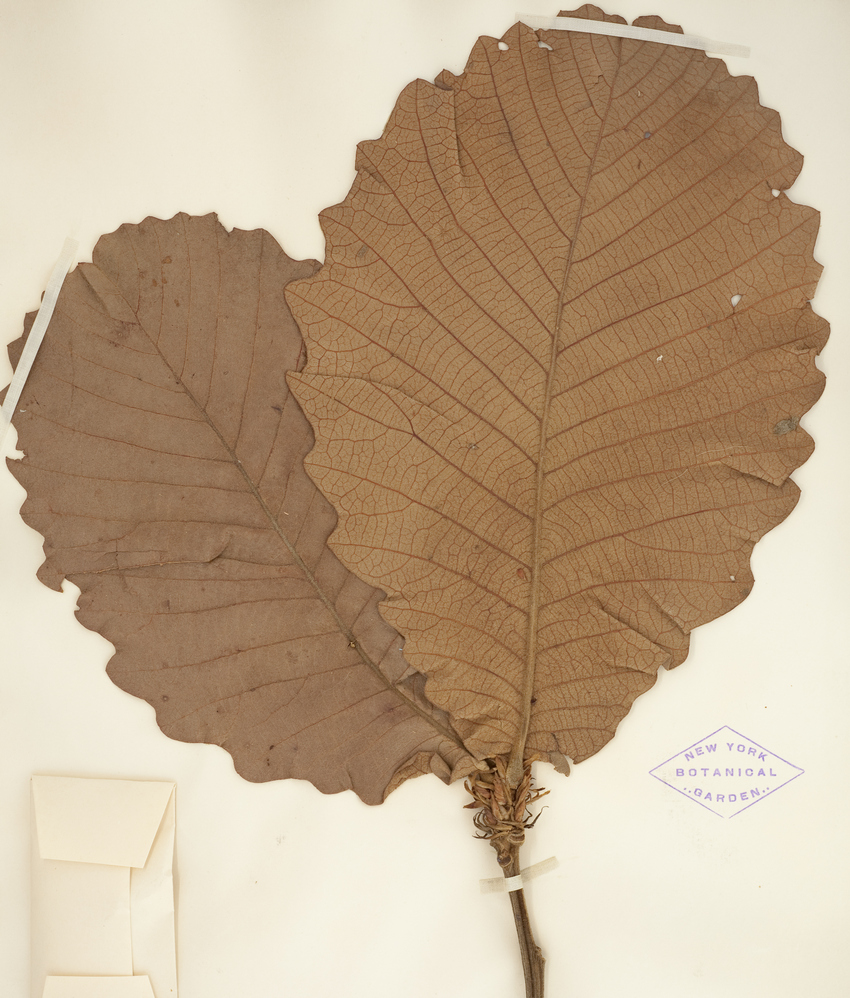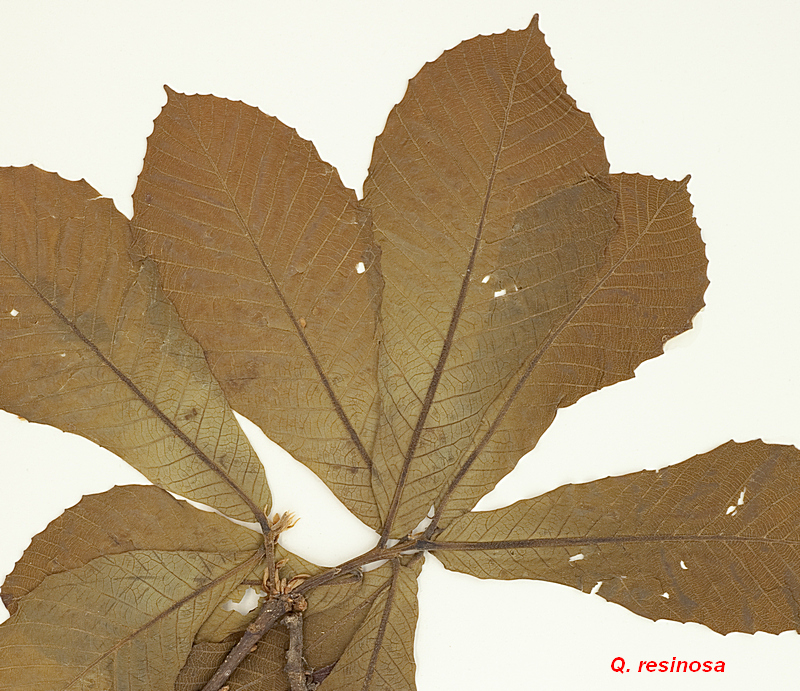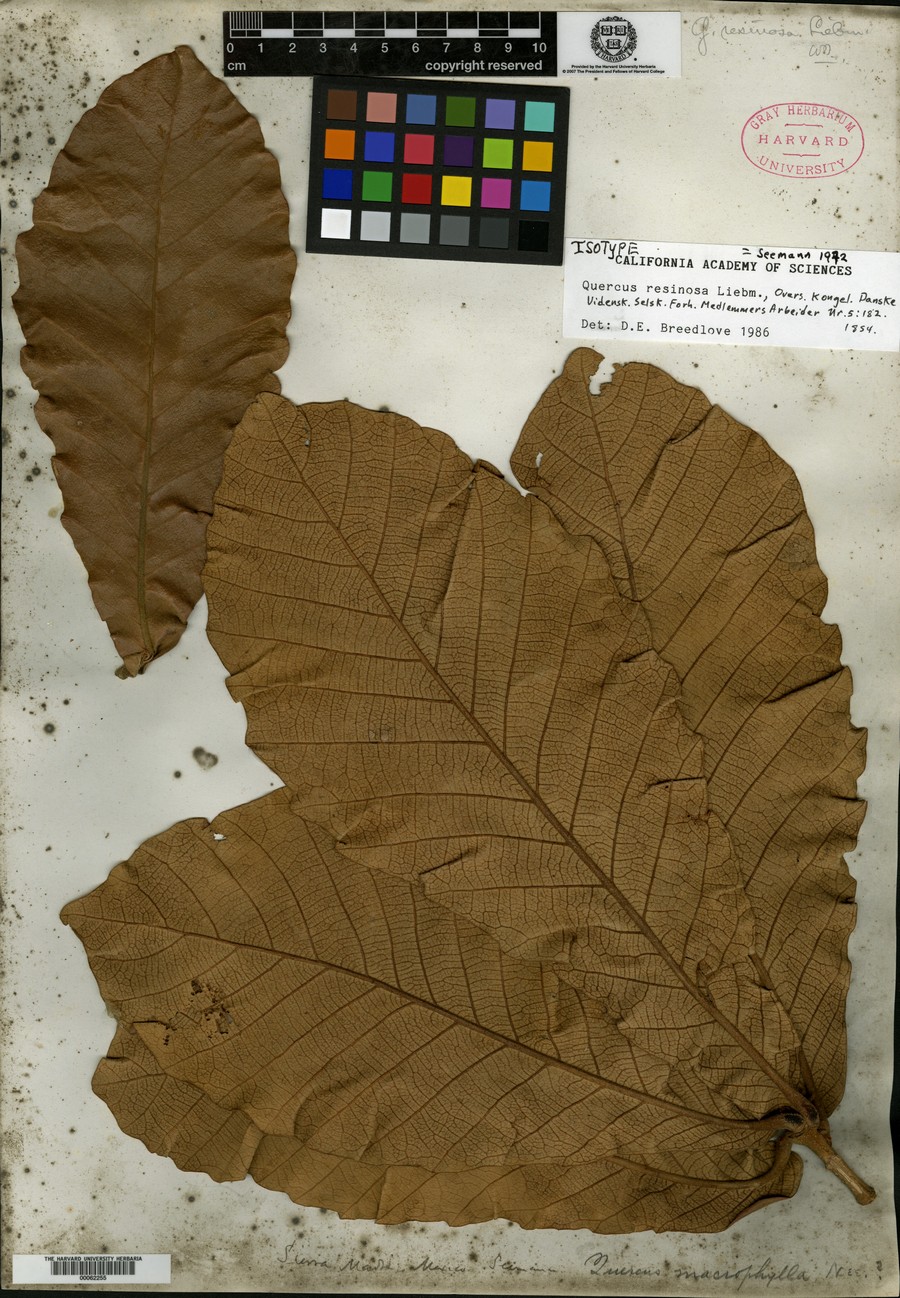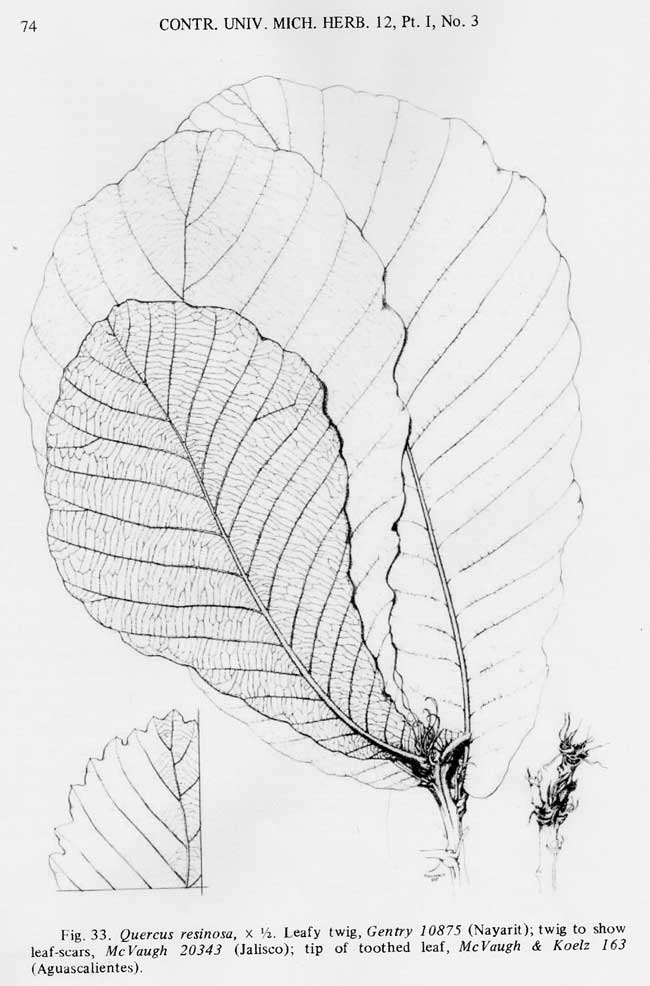| Quercus resinosa | |
| Author |
Liebm. 1854 Overs. Kongel. Danske Vidensk. Selsk. Forh. Medlemmers Arbeider 1854: 182 Diagnose here |
| Synonyms | macrophylla sensu Trel.1924, not Née |
| Local names | |
| Range | Mexico (Aguascalientes, Durango, Guanajuato, Jalisco, Michoacan, Nayarit, San Luis Potosi, Zacatecas); 1300-2600 m; |
| Growth habit | 6-12 m tall; trunk to 0.4 m in diameter; |
| Leaves | 10-30 cm x 8-18, sometimes more; deciduous or semi-evergreen; thick, stiff; broadly oboval; apex rounded, broad, mucronate; base narrowly rounded or cordate; margin thickened, flat or slightly revolute, wavy, crenate or with 6-12 pairs of short, mucronate, blunt teeth; lustrous green above with scattered pubescence made of sessile, stellate, 4-8 rayed-trichomes and golden glandular ones; dense tomentum whitish yellow beneath made or short, stalkless, stellate 5-12-rayed-trichomes, and rusty glandular ones; 12-20 vein pairs, straight and parallel, flat above, raised under; epidermis smooth, or slightly bullate and papillose; petiole tomentose, short 0.2-0.6 cm); young leaves are sticky, hence the species name; |
| Flowers | March to May; staminate catkins 7-15(-20) cm long, with more than 30 flowers; pistillate flowers 1 to 10 along tomentose catkin 2-5 cm long; |
| Fruits | acorn ovoid 1.5-3 cm long; singly or to 5 together or more, on a tomentose peduncle 1.5-6 cm long; cup halfround 18-23 mm in diameter, with greyish tomentose scales, enclosing 1/3 to 1/2 of nut; maturing first year from October to November; |
|
Bark, twigs and |
bark thick, scaly, dark; twig thick (0.4-1 cm in diameter), angled, with tawny tomentum and yellowish lenticels; bud 3-6 mm long, ovoid, pointed, with ciliate scales; stipules reaching 1.5 cm long, linear, hairy, often persistent; |
| Hardiness zone, habitat | not hardy; |
| Miscellaneous | -- A. Camus = n° 214; -- Sub-genus Quercus, Section Quercus, Series Leucomexicanae; -- Closely related to Q.magnoliifolia, which differs mainly in having thinner twigs, longer petioles and a bullate epidermis; |
| Subspecies and varieties |
|
| Pictures |
More pictures HERE
|
